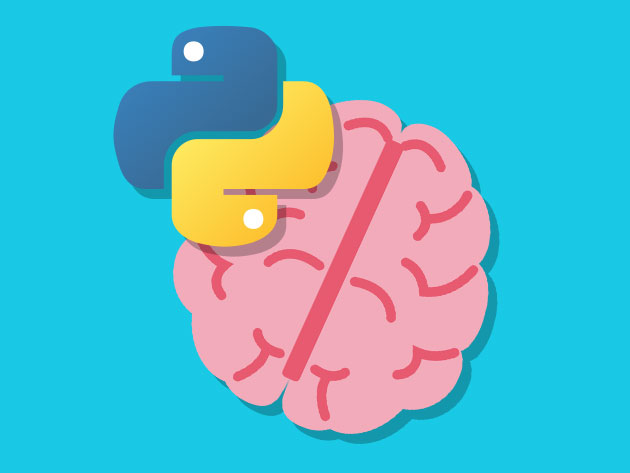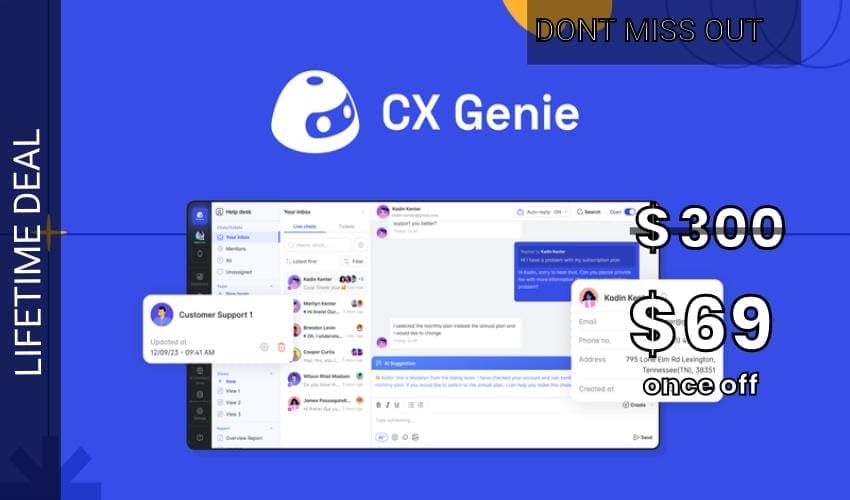Reinforcement Learning Bundle for $39
June 21, 2018 / by Marco / Categories : Business, deals, design, entrepreneur, website

KEY FEATURES
A/B testing is used everywhere, from marketing, retail, news feeds, online advertising, and much more. If you’re a data scientist, and you want to tell the rest of the company, “logo A is better than logo B,” you’re going to need numbers and stats to prove it. That’s where A/B testing comes in. In this course, you’ll do traditional A/B testing in order to appreciate its complexity as you elevate towards the Bayesian machine learning way of doing things.
- Access 40 lectures & 3.5 hours of content 24/7
- Improve on traditional A/B testing w/ adaptive methods
- Learn about epsilon-greedy algorithm & improve upon it w/ a similar algorithm called UCB1
- Understand how to use a fully Bayesian approach to A/B testing
PRODUCT SPECS
Details & Requirements
- Length of time users can access this course: lifetime
- Access options: web streaming, mobile streaming
- Certification of completion not included
- Redemption deadline: redeem your code within 30 days of purchase
- Experience level required: all levels, but knowledge of calculus, probability, Python, Numpy, Scipy, and Matplotlib is expected
- All code for this course is available for download here, in the directory ab_testing
Compatibility
- Internet required
THE EXPERT
The Lazy Programmer is a data scientist, big data engineer, and full stack software engineer. For his master’s thesis he worked on brain-computer interfaces using machine learning. These assist non-verbal and non-mobile persons to communicate with their family and caregivers.
He has worked in online advertising and digital media as both a data scientist and big data engineer, and built various high-throughput web services around said data. He has created new big data pipelines using Hadoop/Pig/MapReduce, and created machine learning models to predict click-through rate, news feed recommender systems using linear regression, Bayesian Bandits, and collaborative filtering and validated the results using A/B testing.
He has taught undergraduate and graduate students in data science, statistics, machine learning, algorithms, calculus, computer graphics, and physics for students attending universities such as Columbia University, NYU, Humber College, and The New School.
Multiple businesses have benefitted from his web programming expertise. He does all the backend (server), frontend (HTML/JS/CSS), and operations/deployment work. Some of the technologies he has used are: Python, Ruby/Rails, PHP, Bootstrap, jQuery (Javascript), Backbone, and Angular. For storage/databases he has used MySQL, Postgres, Redis, MongoDB, and more.

KEY FEATURES
Variational autoencoders and GANs have been two of the most interesting recent developments in deep learning and machine learning. GAN stands for generative adversarial network, where two neural networks compete with each other. Unsupervised learning means you’re not trying to map input data to targets, you’re just trying to learn the structure of that input data. In this course, you’ll learn the structure of data in order to produce more stuff that resembles the original data.
- Access 41 lectures & 5.5 hours of content 24/7
- Incorporate ideas from Bayesian Machine Learning, Reinforcement Learning, & Game Theory
- Discuss variational autoencoder architecture
- Discover GAN basics
PRODUCT SPECS
Details & Requirements
- Length of time users can access this course: lifetime
- Access options: web streaming, mobile streaming
- Certification of completion not included
- Redemption deadline: redeem your code within 30 days of purchase
- Experience level required: all levels, but knowledge of calculus, probability, object-oriented programming, Python, Numpy, linear regression, gradient descent, and how to build a feedforward and convolutional neural network in Theano and TensorFlow is expected
- All code for this course is available for download here, in the directory unsupervised_class3
Compatibility
- Internet required
THE EXPERT
The Lazy Programmer is a data scientist, big data engineer, and full stack software engineer. For his master’s thesis he worked on brain-computer interfaces using machine learning. These assist non-verbal and non-mobile persons to communicate with their family and caregivers.
He has worked in online advertising and digital media as both a data scientist and big data engineer, and built various high-throughput web services around said data. He has created new big data pipelines using Hadoop/Pig/MapReduce, and created machine learning models to predict click-through rate, news feed recommender systems using linear regression, Bayesian Bandits, and collaborative filtering and validated the results using A/B testing.
He has taught undergraduate and graduate students in data science, statistics, machine learning, algorithms, calculus, computer graphics, and physics for students attending universities such as Columbia University, NYU, Humber College, and The New School.
Multiple businesses have benefitted from his web programming expertise. He does all the backend (server), frontend (HTML/JS/CSS), and operations/deployment work. Some of the technologies he has used are: Python, Ruby/Rails, PHP, Bootstrap, jQuery (Javascript), Backbone, and Angular. For storage/databases he has used MySQL, Postgres, Redis, MongoDB, and more.

KEY FEATURES
This course is all about the application of deep learning and neural networks to reinforcement learning. The combination of deep learning with reinforcement learning has led to AlphaGo beating a world champion in the strategy game Go, it has led to self-driving cars, and it has led to machines that can play video games at a superhuman level. Unlike supervised and unsupervised learning algorithms, reinforcement learning agents have an impetus—they want to reach a goal. In this course, you’ll work with more complex environments, specifically, those provided by the OpenAI Gym.
- Access 52 lectures & 5 hours of content 24/7
- Extend your knowledge of temporal difference learning by looking at the TD Lambda algorithm
- Explore a special type of neural network called the RBF network
- Look at the policy gradient method
- Examine Deep Q-Learning
PRODUCT SPECS
Details & Requirements
- Length of time users can access this course: lifetime
- Access options: web streaming, mobile streaming
- Certification of completion not included
- Redemption deadline: redeem your code within 30 days of purchase
- Experience level required: all levels, but knowledge of calculus, probability, object-oriented programming, Python, Numpy, linear regression, gradient descent, how to build a feedforward and convolutional neural network in Theano and TensorFlow, Markov Decision Processes, and how to implement Dynamic Programming, Monte Carlo, and Temporal Difference is expected
- All code for this course is available for download here, in the directory rl2
Compatibility
- Internet required
THE EXPERT
The Lazy Programmer is a data scientist, big data engineer, and full stack software engineer. For his master’s thesis he worked on brain-computer interfaces using machine learning. These assist non-verbal and non-mobile persons to communicate with their family and caregivers.
He has worked in online advertising and digital media as both a data scientist and big data engineer, and built various high-throughput web services around said data. He has created new big data pipelines using Hadoop/Pig/MapReduce, and created machine learning models to predict click-through rate, news feed recommender systems using linear regression, Bayesian Bandits, and collaborative filtering and validated the results using A/B testing.
He has taught undergraduate and graduate students in data science, statistics, machine learning, algorithms, calculus, computer graphics, and physics for students attending universities such as Columbia University, NYU, Humber College, and The New School.
Multiple businesses have benefitted from his web programming expertise. He does all the backend (server), frontend (HTML/JS/CSS), and operations/deployment work. Some of the technologies he has used are: Python, Ruby/Rails, PHP, Bootstrap, jQuery (Javascript), Backbone, and Angular. For storage/databases he has used MySQL, Postgres, Redis, MongoDB, and more.

KEY FEATURES
When people talk about artificial intelligence, they usually don’t mean supervised and unsupervised machine learning. These tasks are pretty trivial compared to what we think of AIs doing—playing chess and Go, driving cars, etc. Reinforcement learning has recently become popular for doing all of that and more. Reinforcement learning opens up a whole new world. It’s lead to new and amazing insights both in behavioral psychology and neuroscience. It’s the closest thing we have so far to a true general artificial intelligence, and this course will be your introduction.
- Access 71 lectures & 5.5 hours of content 24/7
- Discuss the multi-armed bandit problem & the explore-exploit dilemma
- Learn ways to calculate means & moving averages and their relationship to stochastic gradient descent
- Explore Markov Decision Processes, Dynamic Programming, Monte Carlo, & Temporal Difference Learning
- Understand approximation methods
PRODUCT SPECS
Details & Requirements
- Length of time users can access this course: lifetime
- Access options: web streaming, mobile streaming
- Certification of completion not included
- Redemption deadline: redeem your code within 30 days of purchase
- Experience level required: all levels, but knowledge of calculus, probability, object-oriented programming, Python, Numpy, linear regression, and gradient descent is expected
- All code for this course is available for download here, in the directory rl
Compatibility
- Internet required
THE EXPERT
The Lazy Programmer is a data scientist, big data engineer, and full stack software engineer. For his master’s thesis he worked on brain-computer interfaces using machine learning. These assist non-verbal and non-mobile persons to communicate with their family and caregivers.
He has worked in online advertising and digital media as both a data scientist and big data engineer, and built various high-throughput web services around said data. He has created new big data pipelines using Hadoop/Pig/MapReduce, and created machine learning models to predict click-through rate, news feed recommender systems using linear regression, Bayesian Bandits, and collaborative filtering and validated the results using A/B testing.
He has taught undergraduate and graduate students in data science, statistics, machine learning, algorithms, calculus, computer graphics, and physics for students attending universities such as Columbia University, NYU, Humber College, and The New School.
Multiple businesses have benefitted from his web programming expertise. He does all the backend (server), frontend (HTML/JS/CSS), and operations/deployment work. Some of the technologies he has used are: Python, Ruby/Rails, PHP, Bootstrap, jQuery (Javascript), Backbone, and Angular. For storage/databases he has used MySQL, Postgres, Redis, MongoDB, and more.
OTHER ARTICLES YOU MAY LIKE

CX Genie Lifetime Deal for $69
CX Genie Lifetime Deal for $69 Overview CX Genie is a no-code, AI platform that lets you offer 24/7 customer support along every touchpoint for better customer engagement. Provide 24/7 customer support CX Genie lets you handle common support issues with your own AI-powered chatbot, built on GPT-4o-mini for efficient responses and GPT-4 for complex […]
read more
Kosmic Ai – Plus Exclusive Lifetime Deal for $69
Kosmic Ai – Plus Exclusive Lifetime Deal for $69 Overview Kosmic Ai offers a built-in freelancer marketplace, AI-powered video editor, and project management suite in one platform. Find verified, creative freelancers With Kosmic Ai’s marketplace, you can hire top-tier talent for all your video production needs, including video editors, animators, graphic designers, marketers, and scriptwriters. […]
read more


